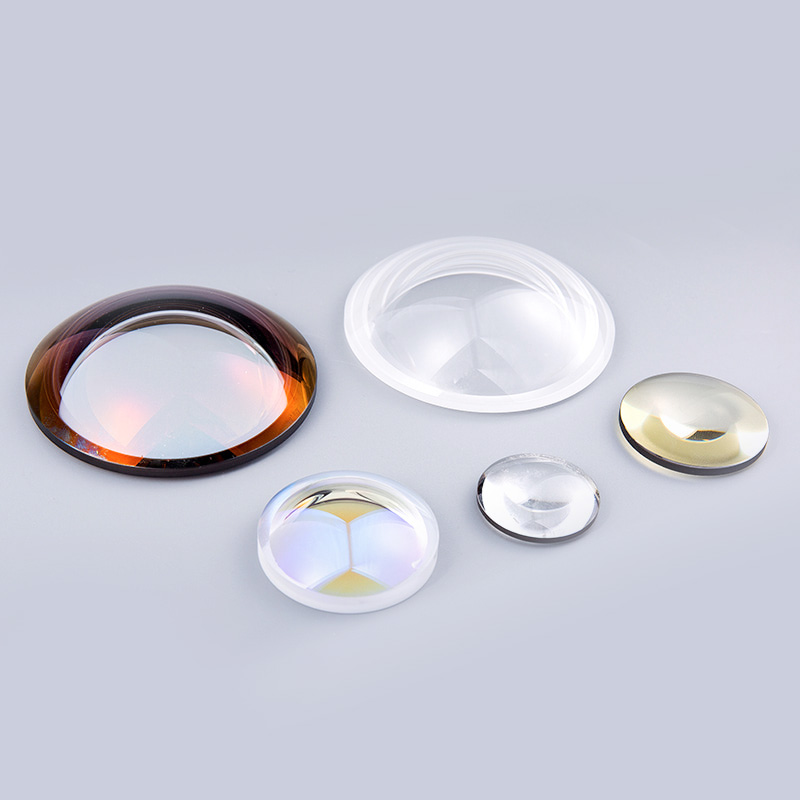The relationship between the shape of an optical spherical mirror and the behavior of light is fundamental to understanding how images are formed and how light interacts with surfaces. Optical spherical mirrors, which come in two primary types—concave and convex—exert distinctive influences on light rays, dictating how those rays converge or diverge upon reflection. In this article, we explore how the curvature of a spherical mirror affects the path of light, shaping everything from basic image formation to the operation of sophisticated optical systems.
The Basics of Spherical Mirrors
A spherical mirror is a segment of a spherical surface, either concave (curved inward) or convex (curved outward). The curvature of the mirror determines the mirror's focal length, which is the distance from the mirror's surface to the point where light rays converge (in the case of a concave mirror) or appear to diverge from (in the case of a convex mirror). These mirrors work on the principle of reflection, where light strikes the surface and bounces back according to the angle of incidence, which is equal to the angle of reflection.
How Curvature Influences Reflection
Concave Mirrors: Convergence of Light
Concave mirrors have an inward curvature that causes parallel light rays to converge at a single point, known as the focal point. The curvature of the mirror determines the focal length—the greater the curvature, the shorter the focal length. As light rays approach the mirror, they reflect and meet at the focal point, where an image is formed. This convergence of light is central to the operation of devices like telescopes, microscopes, and shaving mirrors, where magnification or focus on a specific point is essential.
The position of the object relative to the focal point of a concave mirror significantly affects the nature of the image formed. When an object is placed beyond the focal point, the mirror forms a real, inverted image. However, if the object is between the focal point and the mirror, the image formed is virtual, upright, and magnified. This principle of convergence allows concave mirrors to focus light for a variety of practical applications, from concentrating solar energy to creating magnified images in optical instruments.

Convex Mirrors: Divergence of Light
In contrast, convex mirrors have an outward curvature that causes light rays to diverge upon reflection. These mirrors appear to spread light outwards, making them ideal for providing a wider field of view. The rays diverge from an imaginary focal point located behind the mirror. While convex mirrors do not form real images, they produce virtual images that are smaller than the actual object. This property is crucial in applications such as car side mirrors, security mirrors, and architectural designs, where a broad, panoramic view is required.
The diverging light from convex mirrors can create a perception of increased distance, which can be both an advantage and a limitation, depending on the desired outcome. For example, while convex mirrors are used to widen perspectives in surveillance and driving, they do not magnify objects or bring them into sharp focus.
Practical Applications and Implications
The manipulation of light through the curvature of spherical mirrors plays a vital role across multiple industries. In astronomy, concave mirrors are integral to telescopic designs, where the ability to focus light from distant stars is paramount. Similarly, in optics, the precision of light convergence allows for the creation of magnified images, essential for microscopes and optical instruments.
Convex mirrors, on the other hand, are indispensable in safety and surveillance. Their unique ability to reflect light and provide wide-angle views makes them ideal for use in vehicles and public spaces. The divergence of light rays from convex mirrors aids in preventing accidents by giving drivers a broader field of vision, reducing blind spots and enhancing situational awareness.
The shape of an optical spherical mirror—whether concave or convex—exerts profound influence over the behavior of light. By manipulating light rays to either converge or diverge, these mirrors enable a vast array of optical phenomena, from image formation to magnification and wide-angle viewing. Understanding how curvature affects light reflection not only enhances our ability to design more effective optical devices but also drives innovation across diverse fields, from scientific research to everyday applications. The subtle yet powerful role of spherical mirrors in shaping the path of light underscores their enduring importance in modern optics.

 English
English 日本語
日本語 русский
русский Español
Español Deutsch
Deutsch 中文简体
中文简体










 苏公网安备32041102000130号
苏公网安备32041102000130号